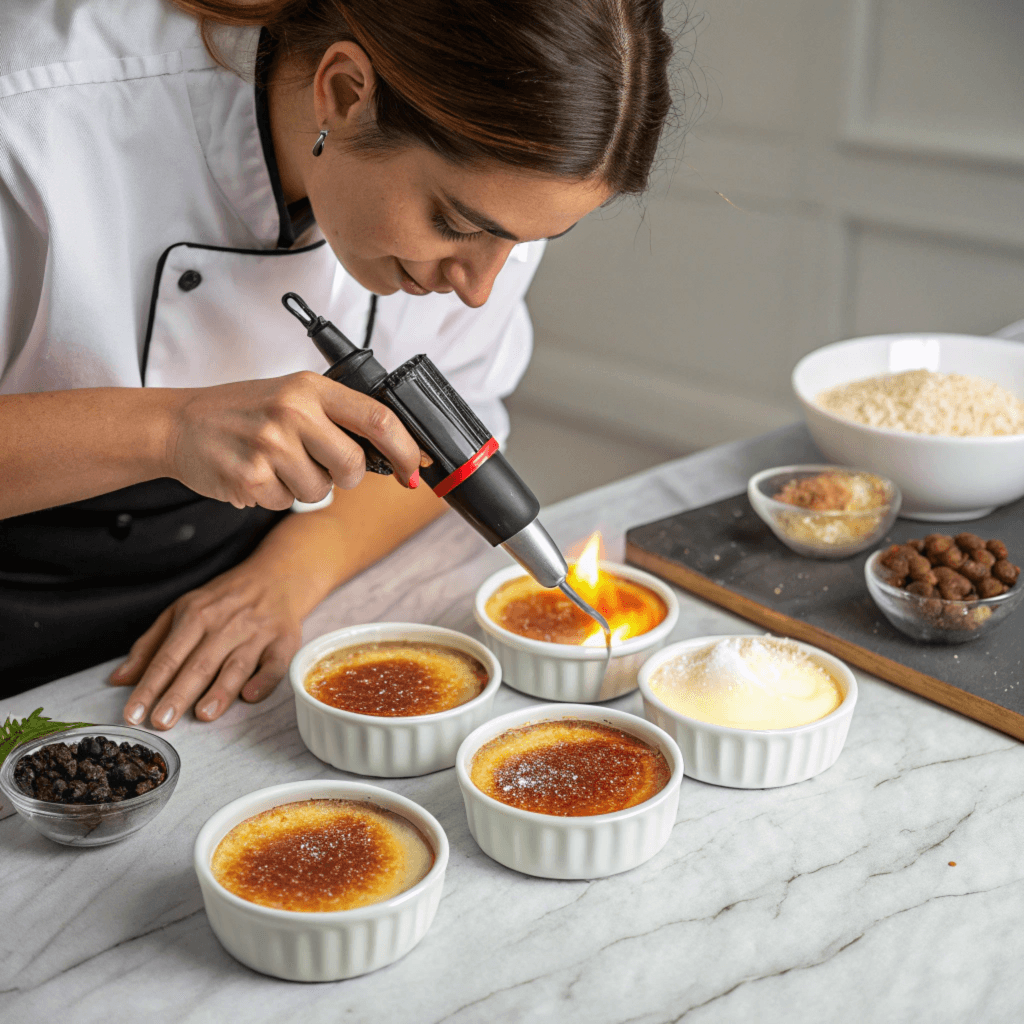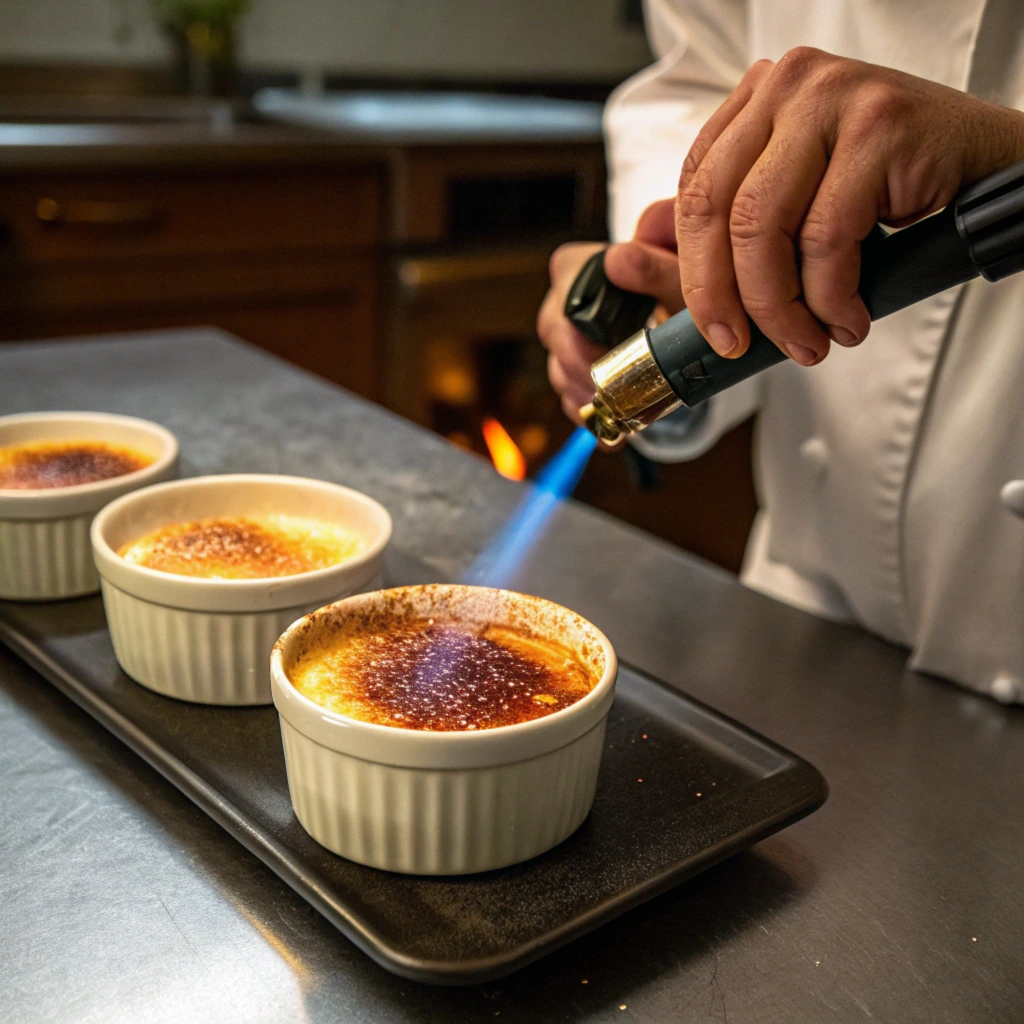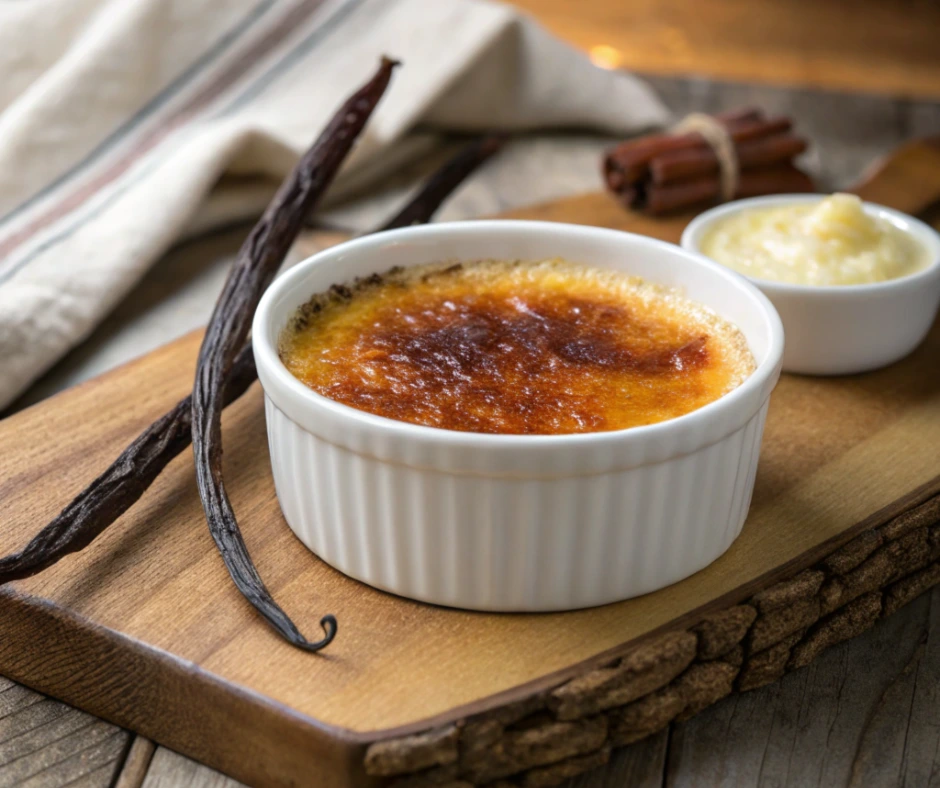Crème brûlée, a classic French dessert, boasts a creamy custard base crowned with a crisp caramelized sugar topping. But have you ever wondered what makes this dish so irresistibly rich and smooth? The type of cream you choose plays a starring role in achieving that perfect consistency and flavor. In this article, we’ll dive deep into the best cream for crème brûlée, unraveling the science behind cream selection, exploring various options, and providing tips for achieving flawless results. Let’s get started!
Understanding the Role of Cream in Crème Brûlée
The Importance of Cream in Texture and Flavor
The cream you choose is the backbone of crème brûlée’s texture and taste. Cream provides the luscious, velvety consistency that defines the dessert. Its fat content interacts with the other ingredients, like eggs and sugar to form a custard that holds together without being too firm or too runny. Not only that, but the cream also infuses the dish with subtle richness that elevates the flavor to pure indulgence.
How Fat Content Affects the Custard
The fat content of cream is a game-changer. Higher fat creams, like heavy cream, create a dense, creamy texture that resists curdling during baking. On the other hand, creams with lower fat content (like half-and-half) might leave the custard watery or lacking that signature smoothness. Fat is the secret ingredient that ensures your custard sets beautifully while maintaining a melt-in-your-mouth quality.
The Science Behind Cream’s Role in Crème Brûlée
Here’s a little food science for you: fat stabilizes the proteins in the eggs, preventing them from over-coagulating and forming lumps. When baked, this delicate balance ensures a smooth, uniform custard. Plus, fat is a fantastic flavor carrier, amplifying the vanilla and caramel notes that make crème brûlée so delightful. This is why the right cream isn’t just an ingredient, it’s the foundation of the dish.

Exploring Different Types of Cream for Crème Brûlée
Why Heavy Cream is the Preferred Choice
When it comes to choosing the best cream for crème brûlée, heavy cream takes the crown. Why? It’s all about its high-fat content, usually around 36-40%. This rich fat percentage ensures a custard that is luxuriously thick and creamy. Heavy cream also prevents the custard from splitting or curdling during baking, which is crucial for that smooth, dreamy texture we all crave. Its subtle, rich flavor complements the sweetness of the dessert without overpowering it, making it the gold standard for crème brûlée recipes.
Whipping Cream: A Viable Alternative?
Whipping cream, often containing 30-35% fat, can be used in place of heavy cream, but with a slight compromise. It’s lighter in texture, which may result in a custard that’s not as decadently thick. However, if heavy cream isn’t available, whipping cream can still yield a pretty good crème brûlée. Keep in mind, though, that it’s essential to stick closely to the recipe proportions and baking techniques to avoid a watery custard.
Why Low-Fat and Non-Dairy Creams Are Not Recommended
Avoid low-fat creams and non-dairy substitutes at all costs if you want your crème brûlée to shine. These alternatives simply don’t have the fat content needed to create a stable custard. Low-fat options often result in a dessert that’s watery and lacks the richness essential to the dish. Similarly, non-dairy creams may work for other recipes but fail to deliver the smooth texture and depth of flavor expected in crème brûlée. Stick to heavy or whipping cream to avoid disappointment.
Selecting the Best Cream for Crème Brûlée
Evaluating Fat Content and Freshness
When picking the best cream for crème brûlée, checking the fat content is non-negotiable. Heavy cream, with its higher fat content, is the best choice. Make sure to read the label to ensure the cream has at least 36% fat. Additionally, freshness is key. Always choose cream with a far-off expiration date, and avoid using opened cartons that might have lost their flavor or quality. Fresh cream not only enhances taste but also ensures the custard sets properly.
Quality Considerations: Brand and Production Details
Not all creams are created equal. Some brands use additives that can affect the taste or texture of your dessert. Opt for a high-quality cream from reputable dairy producers. Organic or locally sourced creams are often fresher and have a more natural flavor. These small details can make a big difference when crafting your perfect crème brûlée.
Understanding Expiration and Storage Guidelines
Cream is a perishable product, and its freshness can make or break your dessert. Always check the expiration date and store your cream in the refrigerator at the right temperature. If you have leftover cream, seal it tightly to avoid absorbing odors from other foods. Use it within a few days to ensure it retains its freshness and flavor.
Techniques for Using Cream in Crème Brûlée

Proper Mixing Techniques for Smooth Custard
Creating the perfect crème brûlée starts with careful mixing. When combining cream with eggs and sugar, always mix gently. Whisking too vigorously introduces air, which can lead to bubbles in the custard. To avoid this, use a slow and steady motion. This ensures the custard has a silky-smooth texture, making every spoonful a luxurious treat.
Controlling Heat to Prevent Overheating
Temperature plays a critical role in baking crème brûlée. When heating the cream, avoid letting it come to a boil. Instead, aim for a gentle simmer, this prevents the proteins from breaking down and curdling the mixture. Additionally, bake the custard in a water bath (bain-marie) to maintain even heat distribution. This method prevents the edges from overcooking while ensuring the center sets perfectly.
Storing and Reusing Leftover Cream
If you find yourself with leftover cream, proper storage is key. Transfer the cream to an airtight container and store it in the coldest part of your refrigerator. Use it within a few days to retain its freshness and rich flavor. Leftover cream can also be used in other recipes like soups or sauces, so nothing goes to waste.
Enhancing Crème Brûlée with Unique Cream Variations
Infusing Cream with Flavors
Why stop at plain cream when you can infuse it with exciting flavors? By simmering the cream with ingredients like vanilla beans, citrus zest, or spices such as cinnamon, you can create a unique twist on the classic crème brûlée. These subtle infusions add complexity to the dessert, elevating its taste and making it unforgettable.
Experimenting with Dairy Alternatives for Added Richness
For those who enjoy a bit of culinary creativity, experimenting with other dairy products can yield fantastic results. Adding a touch of mascarpone cheese, for example, enhances the richness of the custard. This approach works best when paired with heavy cream to maintain the desired texture while introducing a slightly tangy flavor.
Balancing Flavor Additives with Cream
When incorporating additional flavors, it’s essential to maintain balance. Too much of any ingredient can overpower the subtlety of the crème brûlée. By carefully pairing flavorings with the creamy base, you ensure a harmonious result. Vanilla remains the go-to classic, but don’t hesitate to try new combinations to surprise and delight your guests.
To learn more about creating delightful variations of this dessert, you might enjoy exploring What Is the Secret to Crème Brûlée?.
Troubleshooting Common Problems in Crème Brûlée
Fixing Watery or Runny Custards
A watery crème brûlée is every baker’s nightmare, but it’s an easy issue to resolve. If your custard turns out runny, it could be due to using cream with a low-fat content. Always stick to heavy cream for the best results. Another reason could be underbaking. Ensure the center of the custard is just set with a slight jiggle before removing it from the oven. Using a water bath (bain-marie) also prevents the custard from overheating, helping it set properly.
Preventing Grainy Textures
Grainy custard is often caused by overcooking. This happens when the eggs in the mixture curdle due to excessive heat. To prevent this, always bake your crème brûlée at a low temperature and monitor it closely. Using a thermometer is helpful, aim for an internal temperature of around 175°F (80°C). Another tip? Strain your custard mixture before pouring it into ramekins to remove any lumps and ensure smoothness.
Avoiding Common Mistakes with Cream Choices
Choosing the wrong type of cream can lead to disastrous results. Low-fat or non-dairy creams simply don’t have the structure to create a stable custard. Heavy cream is the only reliable choice for that rich, creamy consistency. Stick to fresh cream and avoid using anything close to its expiration date, as this could compromise both texture and flavor.
FAQs:
Can Whipping Cream Be Used Instead of Heavy Cream?
Yes, whipping cream can be used, but it’s not ideal. It has a slightly lower fat content, which means the custard might not be as rich and creamy. For the best results, stick to heavy cream whenever possible.
What is the Fat Content of Heavy Cream?
Heavy cream usually contains 36-40% fat. This high-fat content is essential for creating the smooth, velvety texture that defines a perfect crème brûlée.
Is Non-Dairy Cream an Option for Crème Brûlée?
Unfortunately, non-dairy creams are not recommended. They lack the fat content needed to stabilize the custard, leading to a less satisfying result. For the classic crème brûlée, heavy cream remains the best choice.
How to Store Leftover Cream Properly?
Store leftover cream in a tightly sealed container in the coldest part of your refrigerator. Use it within a few days to maintain freshness, and don’t freeze it, as freezing can alter its texture and flavor.
Historical and Modern Uses of Cream in Crème Brûlée
The Culinary History of Crème Brûlée and Heavy Cream
Crème brûlée has a rich history that dates back centuries, and cream has always been at the heart of its recipe. This dessert, which translates to “burnt cream,” first gained popularity in European kitchens during the 17th century. Back then, cooks relied on heavy cream to give the custard its indulgent texture. The use of cream wasn’t just about taste, it was a symbol of luxury and refinement, elevating the dessert to its iconic status.
Evolution of Cream Choices in Modern Recipes
Over time, variations of crème brûlée have emerged, but heavy cream remains the gold standard. Modern chefs often experiment with whipping cream or blend it with other dairy products to tweak the texture. However, the classic recipe has stood the test of time because nothing matches the richness and stability heavy cream brings to the custard. Even as dietary trends evolve, traditionalists agree that cream with high-fat content is irreplaceable for the best results.
Why Heavy Cream Remains a Staple Ingredient
Despite new alternatives entering the market, heavy cream continues to be a must-have for crème brûlée. Its high-fat content creates the perfect balance of texture and flavor. It’s not just about following tradition; it’s about achieving that unmistakable creamy mouthfeel that defines this dessert. Whether you stick to the classic recipe or try modern twists, heavy cream ensures you never stray far from the roots of this timeless dish.
Conclusion and Final Thoughts
Wrapping Up: The Importance of Choosing the Right Cream
The cream you choose for your crème brûlée has a massive impact on its texture, flavor, and overall success. Heavy cream, with its rich fat content, is undeniably the best cream for crème brûlée. While whipping cream can serve as a backup, low-fat and non-dairy options often fall short. Understanding the role of cream helps you create a custard that’s smooth, rich, and absolutely divine.
Final Tips for Perfect Crème Brûlée
To achieve the best results, always prioritize fresh, high-quality heavy cream. Don’t be afraid to experiment with subtle flavor infusions or pair heavy cream with other dairy products like mascarpone for added depth. Most importantly, take your time during the preparation process, perfecting crème brûlée is a labor of love, but the reward is always worth it.
Additional Recipes to Try
If you’ve mastered crème brûlée, why not explore other decadent desserts? For more ideas, check out the creative take on a savory twist with How to Make Crab Brûlée.

